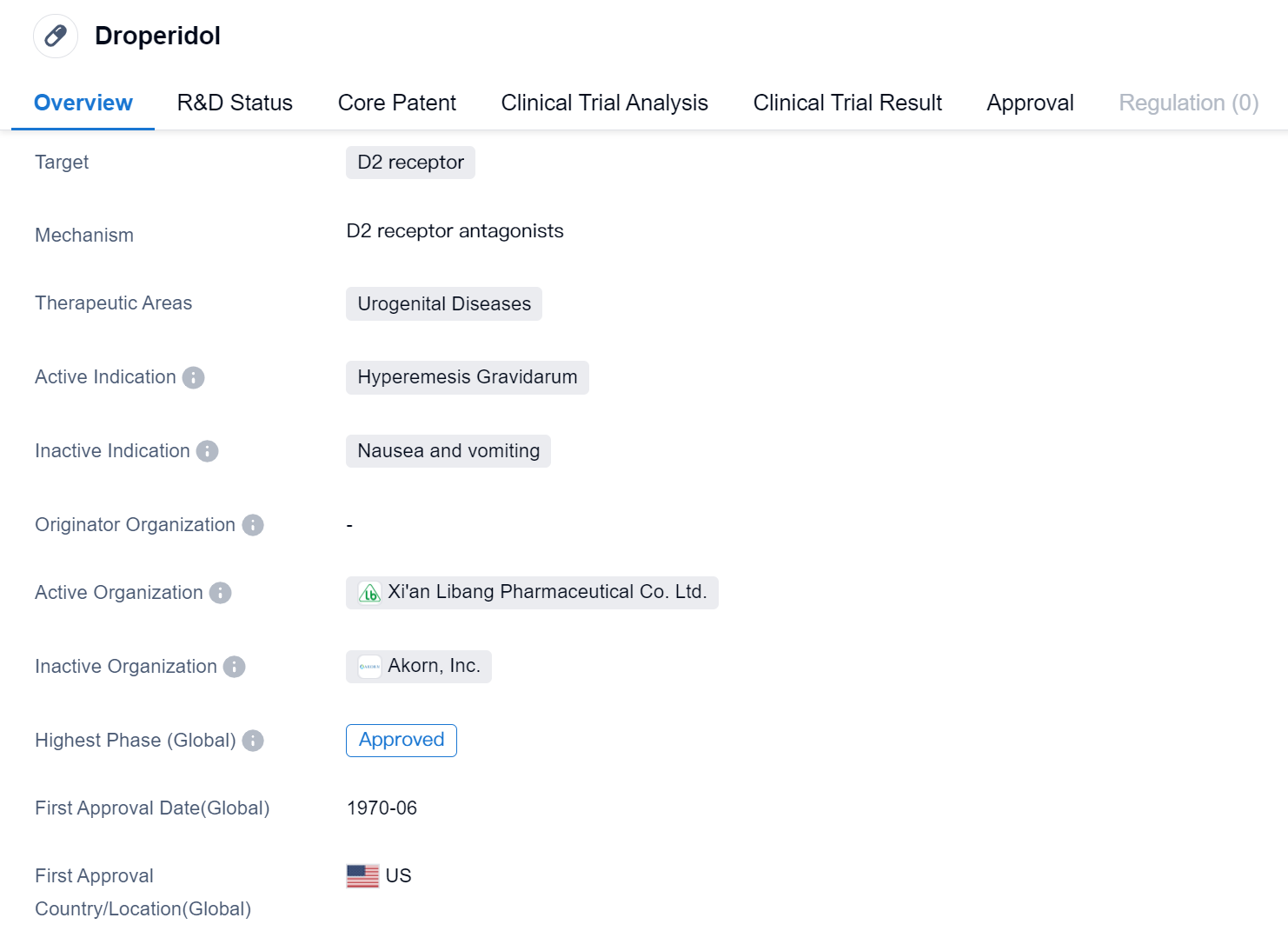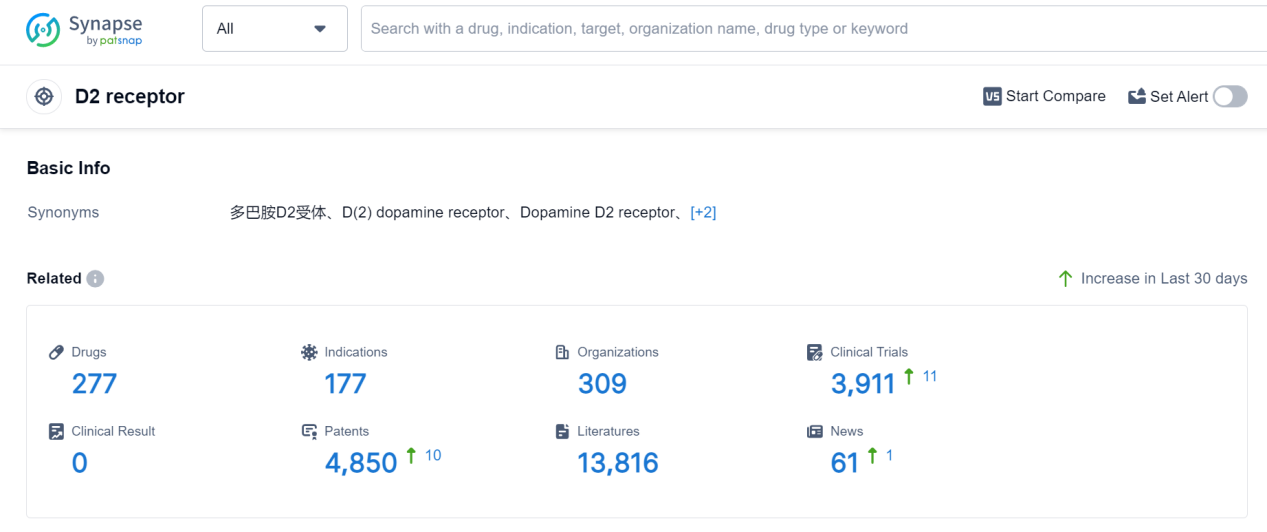Decoding Droperidol: A Comprehensive Study of its R&D Trends and Mechanism on Drug Target
Droperidol's R&D Progress
Droperidol is a small molecule drug that primarily targets the D2 receptor. It is used in the treatment of urogenital diseases, with its active indication being hyperemesis gravidarum. The drug has been approved for use in global markets.
Droperidol was first approved for use in the United States in June 1970, making it a well-established drug with a long history of use. As a small molecule drug, droperidol is likely to have a relatively simple chemical structure, which allows it to be easily synthesized and manufactured. This can be advantageous in terms of production costs and scalability.
The drug's primary target, the D2 receptor, suggests that it acts on the dopamine system. Dopamine is a neurotransmitter that plays a crucial role in various physiological processes, including movement, motivation, and reward. By targeting the D2 receptor, droperidol may modulate dopamine signaling, leading to its therapeutic effects in urogenital diseases, particularly hyperemesis gravidarum.
Hyperemesis gravidarum is a condition characterized by severe nausea and vomiting during pregnancy. It can lead to dehydration, weight loss, and electrolyte imbalances, posing risks to both the mother and the developing fetus. Droperidol's approval for this indication suggests that it has demonstrated efficacy in alleviating the symptoms of hyperemesis gravidarum and improving the well-being of pregnant women.
👇Please click on the image below to directly access the latest data (R&D Status | Core Patent | Clinical Trial | Approval status in Global countries) of this drug.
Mechanism of Action for Droperidol: D2 receptor antagonists
D2 receptor antagonists are a class of drugs that block or inhibit the activity of D2 receptors in the brain. D2 receptors are a subtype of dopamine receptors, which are involved in various neurological functions, including movement, cognition, emotion, and reward. By blocking D2 receptors, D2 receptor antagonists can modulate dopamine signaling in the brain.
From a biomedical perspective, D2 receptor antagonists are commonly used in the treatment of psychiatric disorders such as schizophrenia and bipolar disorder. By inhibiting the activity of D2 receptors, these drugs can help reduce the symptoms associated with these conditions, such as hallucinations, delusions, and mood disturbances. Additionally, D2 receptor antagonists are also used as antiemetic agents to prevent nausea and vomiting caused by chemotherapy or certain medications.
It's important to note that D2 receptor antagonists may have side effects, including extrapyramidal symptoms (such as tremors and muscle stiffness), sedation, weight gain, and hormonal imbalances. The specific D2 receptor antagonist prescribed and its dosage will depend on the individual's condition and response to the medication. As with any medication, it is essential to follow the prescribed dosage and consult with a healthcare professional for proper guidance and monitoring.
Drug Target R&D Trends for Droperidol
The D2 receptor is a type of dopamine receptor found in the human body. It plays a crucial role in various physiological and neurological processes. As a G-protein coupled receptor, the D2 receptor is involved in the regulation of dopamine neurotransmission, which affects mood, motivation, and reward. Dysfunction of the D2 receptor has been implicated in several psychiatric disorders, including schizophrenia and addiction. Additionally, the D2 receptor is a target for antipsychotic medications, which work by blocking its activity to alleviate symptoms associated with psychosis. Understanding the role of the D2 receptor is essential for developing therapeutic interventions for psychiatric and neurological conditions.
According to Patsnap Synapse, as of 7 Sep 2023, there are a total of 277 D2 receptor drugs worldwide, from 309 organizations, covering 177 indications, and conducting 3911 clinical trials.
👇Please click on the picture link below for free registration or log in directly if you have a freemium account, you can browse the latest research progress on drugs, indications, organizations, clinical trials, clinical results, and drug patents related to this target
Conclusion
In summary, droperidol is a small molecule drug that targets the D2 receptor and is used in the treatment of urogenital diseases, specifically hyperemesis gravidarum. It has been approved for use in global markets since 1970 and has demonstrated efficacy in alleviating the symptoms of hyperemesis gravidarum.






